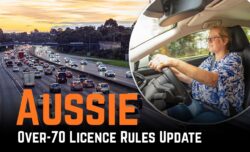In 2026, Australia will roll out new energy bill savings to help households manage rising electricity and gas prices. These automatic credits are expected to benefit both Centrelink recipients and some non-Centrelink households, though the eligibility rules and savings amounts will differ. For many, the relief will be applied directly to their utility accounts, reducing financial stress without the need for complex applications. However, understanding who qualifies and how much support is available will be essential for families and individuals planning their household budgets.

Eligibility Criteria for Centrelink Recipients
Centrelink customers in Australia will be the primary beneficiaries of the 2026 energy bill savings. Eligible groups include pensioners, disability support recipients, carers, and low-income households already receiving government benefits. Automatic credits will be applied to electricity bills quarterly, meaning beneficiaries will not need to apply separately.
- Pensioners and seniors on Age Pension will qualify automatically.
- Families receiving Family Tax Benefit may also be eligible.
- Low-income earners on JobSeeker and Youth Allowance will receive targeted relief.
This direct support is designed to reduce energy hardship among vulnerable Australians who rely heavily on Centrelink payments for their living costs.
Non-Centrelink Household Energy Savings Explained
Non-Centrelink households will also see some benefits in 2026, but their eligibility will depend on state-specific energy relief programs and income thresholds. Many state governments, in partnership with the Commonwealth, are expected to roll out rebates for working families who do not qualify for Centrelink benefits but still face high energy costs.
- Some states may provide rebates for households with children under a certain income limit.
- Self-employed or gig workers not on Centrelink could also qualify under special criteria.
- Application may be required in some cases, unlike the automatic Centrelink credits.
The amount of savings will vary but is likely to be smaller than the support provided to Centrelink customers.

How Much Energy Bill Savings to Expect in 2026
The exact amount of energy bill relief will depend on household category and location. On average, Centrelink recipients can expect between $400 and $500 per year in automatic bill savings, spread across four quarterly installments. Non-Centrelink households may receive between $150 and $250 annually, depending on state programs and income checks.
- Centrelink households: higher credits with automatic application.
- Non-Centrelink households: moderate credits, sometimes requiring applications.
- Regional differences: amounts may vary depending on state funding allocations.
This tiered support ensures vulnerable groups receive more significant relief, while working families still get some level of assistance.
 Centrelink Pays Partnered Retirees $280 Age Pension Increase October 2025: What You Need to Know
Centrelink Pays Partnered Retirees $280 Age Pension Increase October 2025: What You Need to Know
Key Differences Between Centrelink and Non-Centrelink Savings
When comparing Centrelink and non-Centrelink energy bill savings in Australia, the main differences lie in eligibility, amount, and application process. Centrelink recipients automatically qualify for higher credits, with no additional steps required. Non-Centrelink households, however, may need to apply through their energy retailer or state portal, and their credits will typically be lower. This distinction reflects government priorities in supporting pensioners, jobseekers, and low-income earners most impacted by rising energy costs, while still providing broader relief to families not on welfare benefits.
| Category | Eligibility | Automatic or Application | Annual Savings (Approx.) |
|---|---|---|---|
| Centrelink Recipients | Pensioners, Disability, Carers, JobSeeker, Youth Allowance | Automatic credits applied | $400 – $500 |
| Non-Centrelink Households | Working families under income threshold, state-specific rules | May require application | $150 – $250 |
FAQs on 2026 Energy Bill Savings in Australia
- Q: Do I need to apply if I’m on Centrelink?
A: No, the credits will be applied automatically. - Q: Will non-Centrelink households get support?
A: Yes, but amounts will be smaller and may require applications. - Q: How often will credits be given?
A: Every quarter (four times a year). - Q: Do all states in Australia offer the same savings?
A: No, amounts may vary based on state government contributions.





